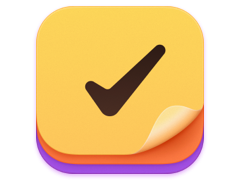By John Gruber

Finalist for iOS: A love letter to paper planners
Tired: Irresistable Force vs. Immovable Object — Wired: Unchanging Prices vs. Nonsensical Tariffs
Friday, 4 April 2025
Akash Sriram, reporting for Reuters under the headline “A $2,300 Apple iPhone? Trump Tariffs Could Make That Happen.”:
Most iPhones are still made in China, which was hit with a 54% tariff. If those levies persist, Apple has a tough choice: absorb the extra expense or pass it on to customers.
Shares of the company closed down 9.3% on Thursday, hitting their worst day since March 2020.
Apple shares dropped another 7.3% percent today. Apple alone has lost 16.6% of its value in the last 48 hours; the S&P 500 dropped 10%.
The cheapest iPhone 16 model was launched in the U.S. with a sticker price of $799, but could cost as much as $1,142, per calculations based on projections from analysts at Rosenblatt Securities, who say the cost could rise by 43% — if Apple is able to pass that on to consumers. A more expensive iPhone 16 Pro Max, with a 6.9-inch display and 1 terabyte of storage, which currently retails at $1599, could cost nearly $2300 if a 43% increase were to pass to consumers.
It’s under-remarked upon, but Apple, to a point of almost obstinance, considers pricing part of the brand for its products. They tend not to raise or lower prices with the ebbs and flows of the world economy or even the obvious constraints of simple supply and demand. Throughout the entire COVID crisis, I don’t recall them changing their prices for anything.
As an extreme example, consider the trashcan Mac Pro. It was introduced at WWDC 2013 and shipped in December that year with a starting price of $2,999. It then went over three years without an update — and still cost $2,999. Then in April 2017 Apple held that highly unusual small roundtable meeting — invitees were just Matthew Panzarino, Lance Ulanoff, Ina Fried, John Paczkowski, and yours truly — to discuss “completely rethinking the Mac Pro”. They issued small speed bumps to the trashcan Mac Pro that day, but didn’t ship the actual completely-rethought Mac Pro until WWDC 2019. The starting price never changed from $2,999, even when demand for the trashcan models had clearly dropped to near zero. The price was part of the brand. (The starting price for the 2019 Mac Pro: $5,999.)
Or consider today’s Mac Pro, with the M2 Ultra. It debuted alongside Mac Studio models that also came with the M2 Ultra at WWDC 2023 almost two years ago. M2 Ultra Mac Studios started at $3,999; Mac Pros at $6,999. Many observers, quite reasonably, questioned the $3,000 price difference when both computers offered the same chips. The 2023 Mac Pro, in some sense, is just a 2023 Mac Studio in a much bigger case with additional high-performance I/O options. But a month ago Apple debuted M3 Ultra Mac Studios, with an unchanged starting price of $3,999. The Mac Pro, still equipped with the older M2 Ultra, still starts at $6,999. Which means that for the time being, you’re not paying $3,000 extra for the same computer in a bigger case, but for a generation-older computer in a bigger case.
Presumably, M3 Ultra Mac Pros are coming soon, perhaps at WWDC. But until then, the pricing is undeniably weird when compared to the Mac Studio — and many people have thought the pricing was a bit weird compared to the Mac Studio when they were offered with the same M2-generation chips. But that’s how Apple likes to do pricing: they set a price when a product is announced, and that price never changes until a successor to that product is announced.
The erratic, illogical, nonsensical nature of Trump’s tariffs is bad for everyone. (Understatement.) But it’s particularly troublesome for a company that sees retail price stability as part of the branding for its products. Will Trump come to his senses (to some small degree), and declare a nonexistent victory next week and pull these tariffs from the board? Or stick to his guns and ride this global-economy-tanking insanity out? No one knows. Will he start granting exceptions? No one knows. So in addition to being nonsensical, the whole thing is entirely unpredictable, which is not at all compatible with the way Apple has set retail prices for decades.
My (bigly) guess is that Apple will inject its own predictability and stability into the mix, and keep its retail prices stable, for now, and take the tariff hit on its margins. But if these tariffs really stay in effect, even just for a few months, at current prices Apple would be breaking even at best, and likely losing money, on each iPhone it sells.
